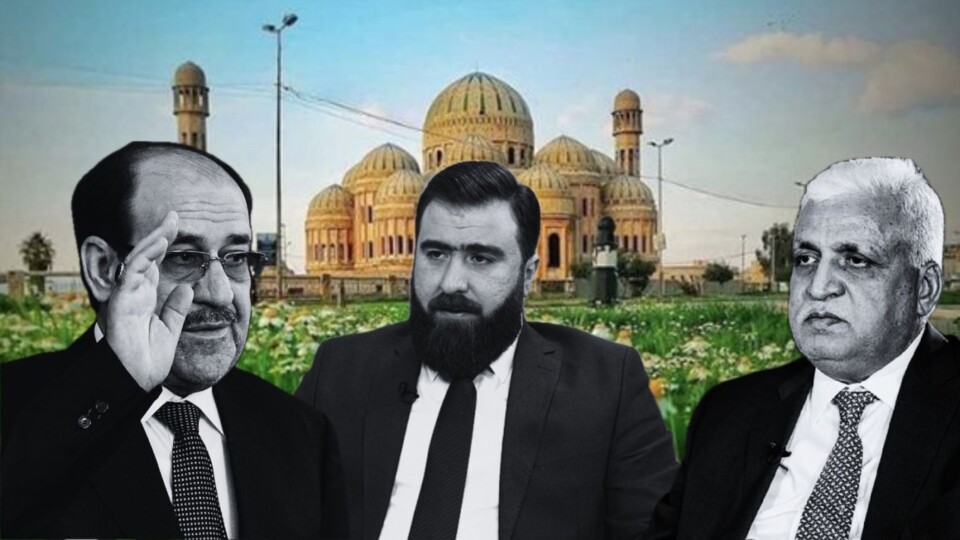

It can be said that the scene of the American invasion of Iraq in 2003 was followed by numerous, stormy, and unsettling changes that manifested in various forms. They affected Iraq, specifically the Shiite scene, which we will discuss in this article.
Before 2003, Shiites did not have access to religious freedoms. These freedoms had been gradually eroded since the second Ba’athist coup in 1968, and the situation worsened significantly under Saddam Hussein’s regime. This was particularly evident as Saddam engaged in an open war with Iran, which had recently undergone a Shiite Islamic revolution. Saddam feared the spread of this revolution into Iraq, especially due to the presence of certain religious authorities, known as Mujtahids (The Mujtahid is a title for the religious reference), in Najaf who were sympathetic to the ideas of the Iranian Islamic revolution during that period.
The suppression faced by the Shiite religious institution and its effects on the Shiite community became a significant tool for the Iraqi opposition on the international stage. It justified their collaboration with the United States in invading Iraq and ousting the Saddam Hussein regime. Now, 20 years after the invasion, it is worth considering the current state of the Shiite religious landscape and the transformations it has experienced, including changes within the religious institution and popular religious practices. We should also examine how these changes have influenced Iraqi politics, particularly in terms of Shiite representation.
The religious institution: from a counter enemy for the inside to an equivalent enemy for the outside
Significantly, comprehending the shifts in Shia Islam in Iraq following a 20-year American occupation is intricately tied to understanding the alterations within the Shia religious institution. This entails studying the actions and overall positions of the highest religious reference and the necessary adjustments it has had to make. Throughout its existence, this institution has consistently grappled with the uncertain nature of its relationship with the state, political involvement, and the categorization of others as either allies or adversaries.
Since the second Ba’athist coup in 1968, the relationship between the religious institution in Najaf and the state gradually shifted from tense ambiguity to a complex crisis. It reached catastrophic stages, including the forced displacement of al-Hawza (seminary) students in Najaf and the execution of a significant number of religious figures on various charges. This clarified the concept of “the other – the enemy” for the institution, represented by the ruling authority, subjecting it to a state of extreme protectionism and silence. This situation did not prevent the institution’s men from being killed, amid the brutality and incompetence of the authorities in dealing with the religious reference in Najaf. This incompetence worsened with the Iranian Revolution, which, in turn, had a hostile relationship with the traditional religious institution in Najaf. With its religious reference, Najaf stood against the concept of Wilayat al-Faqih (Guardianship of the Jurist) and the exportation of the revolution, a fact that Saddam Hussein failed to understand or capitalize on until the disaster of 2003.
However, the years of individual rule under the Ba’athist ideology compelled the Shia religious institution in Najaf to act based on the assumption of an opposing enemy which was represented by a secular Ba’athist authority that operated in a sectarian manner, and based on concerns over the historical centrality of Najaf to Shiism.
The highest religious reference made strenuous efforts to preserve the lives of scholars and students while ensuring the continuity of religious education at a minimal level. Despite the migration of a significant number of professors of the early and middle stages of study within the seminary and the lack of commitment among the remaining students in Najaf, it still endeavored to maintain the religious teachings.
Due to these circumstances, the primary religious authority in Najaf found itself isolated and without the support of its followers. Moreover, the authority was preoccupied in a way that prevented it from engaging in further conflicts with specific adversaries. This primarily pertains to the concept of Wilayat al-Faqih (Guardianship of the Islamic Jurist) and other individuals seeking to exert control over the Shia community. Furthermore, the internal upheaval instigated by Mohamed al-Sadr and his divisive rhetoric resulted in a divided seminary, with one faction being outspoken and the other remaining silent, as per al-Sadr’s description. These developments unfolded after 2003, triggering intricate and multi-faceted transformations.
The collapse of Saddam Hussein’s regime and the ensuing chaos after 2003 placed the religious reference in Najaf amidst turbulent changes. The highest religious reference found himself compelled to intervene in political affairs. With extreme caution, Grand Ayatollah al-Sistani was obligated to strike a delicate balance between his religious jurisprudence that prohibits direct involvement in politics and what he perceived as a religious obligation towards his followers. Within this framework, he demanded the prevention of the United States from shaping the Constitution and political process according to its measures.
At the same time, he finds himself forced to deal with Shiite Islamic parties that he does not trust, and that have a turbulent history with the Najaf religious authority, inherited from the days of conflict between Muhammad Baqir al-Sadr and the Najaf authority. These parties adopted dynamic concepts that were not embraced by Najaf and posed a threat that led to the execution of dozens of students and thousands of Iraqis accused of belonging to the Islamic movement. Not to mention the connection of these movements to the system of Wilayat al-Faqih (Guardianship of the Islamic Jurist), especially after the assassination of Muhammad Baqir al-Hakim, who was the only one capable of controlling the pace of these parties and groups.
In addition to the political turmoil that forced Al-Sistani to intervene in it, there was a greater threat he faced: the ideological threat seeking to dominate Najaf and its Shiite decision-making. This threat is the concept of “Wilayat al-Faqih”, which found a way to begin its attempts to dominate Najaf, especially after the decline of religious education in the city for more than twenty years, and the emergence of a generation of professors sponsored by the Guardianship of the Jurist in Iran, who distanced themselves from the spiritual authority of Najaf. The Iranian authorities also stopped certain professors who had fled from Najaf to Iran, like Mirza Jawad Tabrizi and others, from returning.
The highest reference was thus faced with the challenge of confronting this complexity, which involved keeping Iraqis from embracing the concept of Guardianship of the Jurist and protecting Najaf from religious figures aligned with Iranian rule. At the same time, Al-Sistani was aware that their most important ally, amidst the turmoil of the Iraqi state, was Iran, which adhered to the system of Guardianship of the Jurist and posed a significant threat to Najaf. In this critical situation, marked by the establishment of a new political system, sectarian warfare, and a tense discourse that seemed uncontrollable, the highest reference had to navigate carefully.
The religious landscape among Iraq’s Shia population has been significantly impacted by the dilemma of uncertainty in identifying the “other” or the enemy, as well as the integration of ideological opposition within the framework of an enemy-ally equation. The Shia have come to expect further intervention from the religious reference, which carries a historical responsibility that could undermine its religious standing and hold it accountable for any mistakes committed by the governing system controlled by Shia religious parties.
From a rational religion to a ritualistic religion
On the other hand, amidst the multi-level conflicts, the religious reference in Najaf found itself facing a new internal conflict represented by Shia ritualism. This trend signaled a decline in the role of rational religion that Najaf had long claimed while focusing on the fundamentals and resisting the influence of Akhbaris and esoteric Shia ‘Irfan (knowledge) in favor of ritualistic religion. This shift was bolstered by a powerful propaganda system led by representatives of the ritualistic Shia line, known as the Shirazis in Karbala. They receive significant funding, theoretically at least, from Shirazi circles in Kuwait and are actively engaged in activities in the United Kingdom and the United States.
Although the Shirazi embraced ritualistic practices, their leadership of the decline of religious rationality among the Shia community was rooted in factors beyond religion. It was shaped by the nature of the society that practices it, and its transmission from the middle Euphrates region to the south, which is a highly sensitive matter.
Historically, the religious reference in Najaf did not pay much attention to the Shia population in the southern provinces or even the Shia communities east of the Tigris River in Diyala province. This is not to mention the displaced individuals from the south who migrated to Baghdad. The historic focal point for the Najaf religious reference was the middle Euphrates region, with its distinct tribal system that differed from the tribes in the south. These southern tribes played a significant role in the 1920 Revolution, led by the religious institution in Najaf, contributing to shaping modern Iraq in 1921.
Historically, the religious authority in Najaf did not pay much attention to the Shia population in the southern provinces or even the Shia communities east of the Tigris River in Diyala province. This is not to mention the displaced individuals from the south who migrated to Baghdad.
The historical focus of the Najaf religious reference was primarily centered around the middle Euphrates region, characterized by a distinct tribal system that differed from the tribes in the south. These tribes played a significant role in the 1920 Revolution, which was led by the religious institution in Najaf and had a substantial impact on shaping modern-day Iraq in 1921.
As much as the tribes of the middle Euphrates region embraced the project of religious reference in Najaf, the religious reference was influenced by them and subjected to the activities of seminary students who would travel to the villages of the middle Euphrates region during summer breaks when classes were suspended. This direct interaction allowed them to have a significant level of religious rationality, even though rituals played a role that was organized and involved poets and singers from the same religious centers within the Najaf fundamentalist logical system.
After the year 2003 and as an extension of Mohammad al-Sadr’s attention to the Southerners in the 1990s, making them a pillar of his opposition movement against the reference of Najaf and Saddam Hussein’s regime before his assassination, the Southerners dominated the Shiite scene. The fervent and newly-emerging religious spirit, which characterized the southern regions, began to dominate the entire Shiite scene. This development led to an excessive indulgence in rituals and a complete disruption of daily life during religious visits, in addition to utilizing the resources of the state and causing turmoil within government institutions for the sake of these rituals, which the Shirazis fueled with hopes of attaining the religious reference. However, it led to a decline in religious rationality and further tensions that manifested in sectarian acts, ultimately resulting in a violent backlash following the territorial expansion of the ISIS organization in Iraq after the June 2014 catastrophe.
This regressive ritualism, stemming from a socially conducive environment for extremism, is closely linked to what we mentioned in the previous paragraph regarding the shift in the perception of the enemy: the fear of the potential return of the old enemy and the prevention of the Shia community from maintaining the gains they achieved politically or socially after 2003.
The excessive indulgence in rituals, as much as it is connected to complex accumulations of repression and exclusion and the lack of development in the southern society, is also linked to an identity crisis and fear of the past. It is the historical Shia fear that has become more pronounced and prepared for a counterattack after the years of sectarian violence following 2003, and the emergence of the ISIS organization, which represented an existential challenge to Shia.
The convergence of these factors, even if related to the challenges faced by the religious reference at multiple levels or to the Shiite carrier of the religious and political project after 2003, characterized by confusion and instability in defining principles and goals, became evident in Shia political activities, whether within Islamic parties or among the youth movement.
The complex dynamics of the relationship with Iran, involving conflicts and agreements at different levels, as well as the undeniable animosity of Wilayat al-Faqih towards Najaf, the sectarian violence, and the challenge posed by ISIS that was predominantly driven by religious considerations, subject the burden of history and the intricacies of the relationship of Shia with others and with authority. All of this was ultimately reflected in turbulent political behavior, where Shia political representatives acted as opposition despite holding the most significant executive positions and wielding almost absolute military power.
To summarize, after two decades of change following the American invasion, the Shia community is still experiencing rapid shifts in religious, social, and political aspects. Shia politics remains reminiscent of its days as an opposition force, lacking the capacity to transition into a governing entity.
Reports
Reports","field":"name"}],"number":"1","meta_query":[[]],"paged":1,"original_offset":0,"object_ids":23343}" data-page="1" data-max-pages="1">







